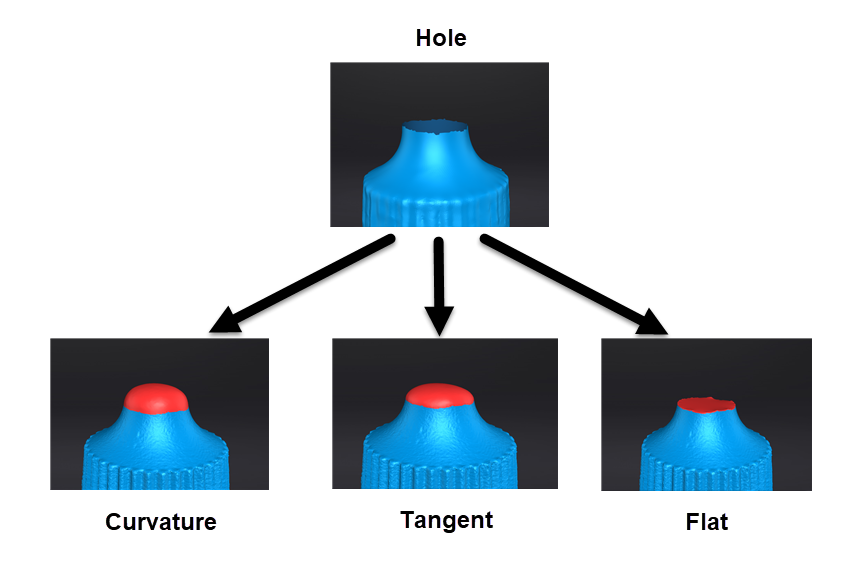Mesh Optimization¶
Meshing is to convert the point cloud into a triangular mesh surface. The meshed data can be directly used for rendering, measurement or printing.
| Function | ||
|---|---|---|
| Texture Adjustment | Brightness and contrast can be adjusted. | Only project files that exclusively contain textures are accessible to this function. |
| Texture Mapping | When meshing the project with scanned texture, this function can be enabled (by default) to remap the texture; if this function is disabled, you can still remap the texture when editing the mesh. | Only project files that exclusively contain textures are accessible to this function. |
| Simplification | Reduce the mesh size universally. A high level of simplification may cause loss of detail. | Over-simplification will result in the loss of data details.
|
| Optimization | Restructure the mesh topology based on the mesh curvature and sharpen the surface features of scan data. | The optimization duration varies depending on the amount of data.
|
| Smooth | To reduce the possible noise on the surface of the scanned data. Drag the scrollbar or click the up and down arrows to set the ratio from 1 to 100. The default is 0, indicating no smooth. |
|
| Remove Small Floating Parts | Remove small floating parts in the scan data. Drag the scrollbar or click the up and down arrows to set the ratio from 1 to 100. The default is 0, indicating no removal. |
|
| Auto Hole Filling | After selecting the hole filling type, enter the perimeter. Holes within the specified perimeter will be filled automatically. | Hole filling types: |
| Manual Hole Filling | After entering the manual hole filling mode, the hole edges are displayed green and get red after picking. The number of the holes and the number of holes filled will be displayed on the interface. | Select filling types before picking a hole and then click the edges to perform filling actions. |
| Flip Normal | To redefine the front direction of the scanned data in reversal design. Hold down Shift + primary button to select areas to be flipped. | |
| Cutting Plane Tool | Define a plane to re-adjust the coordinate system of the scanned data.
|
|
| Mirror | Take the front view plane of scan data as the working plane. Draw a straight line as the central axis and perform a symmetrical copy.Hold down Shift + primary button to draw a straight line as the central axis and then check Keep the initial mesh. | Texture remapping should be performed first as it is not accessible after mirror. |
| Zoom | Adjust the scaling ratio of the model. Enter a value to set the ratio. The default is 100, indicating no zoom. |
|
Data Editing Panel¶
For details about data editing, refer to data editing.